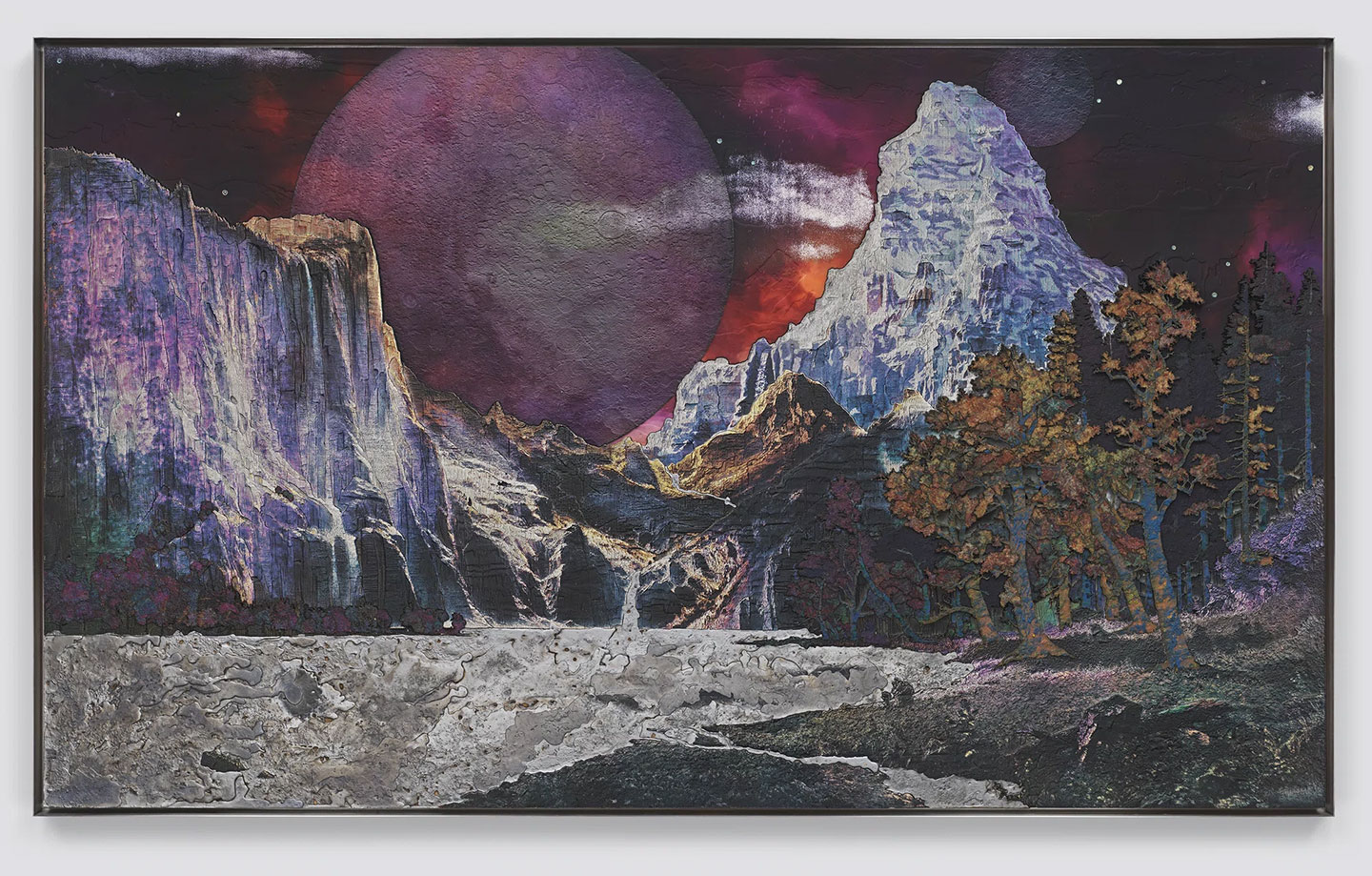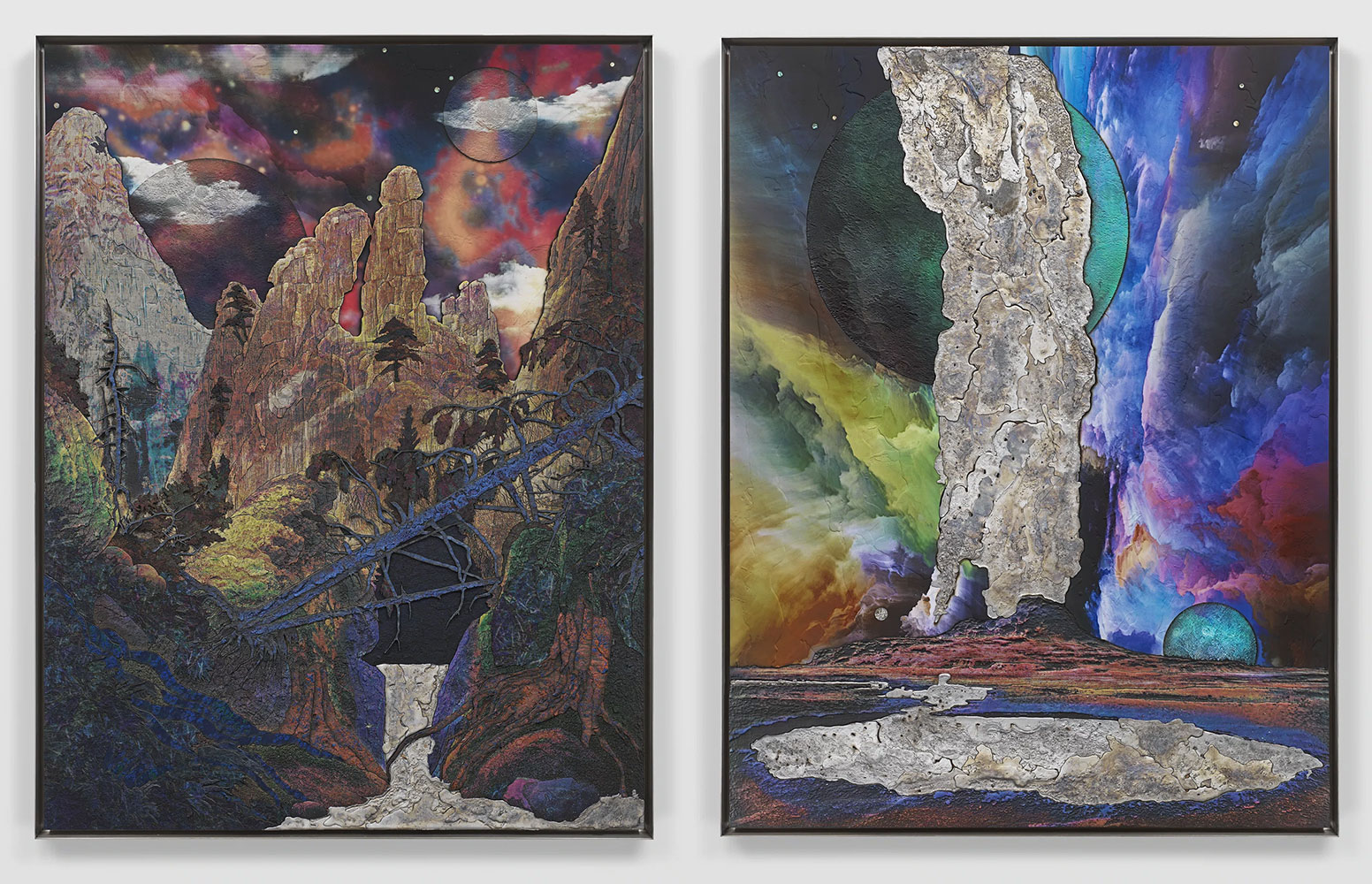ART CITIES:Seoul-Matthew Day Jackson
 In his expansive practice spanning painting, sculpture, installation, collage, drawing, photography, video, and performance, Jackson explores a wide range of subjects, often grappling with notions of American national identity and pursuits of false utopia throughout the country’s history. In his research-based, experimental process, the artist considers conceptual and physical underpinnings equally significant, incorporating traditional, industrial, and found materials in his work across mediums. At the core of his practice is a deep interest in finding similarities within binaries and dichotomies, particularly the simultaneity of beauty and horror.
In his expansive practice spanning painting, sculpture, installation, collage, drawing, photography, video, and performance, Jackson explores a wide range of subjects, often grappling with notions of American national identity and pursuits of false utopia throughout the country’s history. In his research-based, experimental process, the artist considers conceptual and physical underpinnings equally significant, incorporating traditional, industrial, and found materials in his work across mediums. At the core of his practice is a deep interest in finding similarities within binaries and dichotomies, particularly the simultaneity of beauty and horror.
By Efi Michalarou
Photo: Pace Gallery Archive

Spotlighting four otherworldly landscape paintings and one mesmeric seascape painting created by Matthew Day Jackson this year, the exhibition “Counter-Earth” is his first solo presentation in Seoul. The paintings included in the exhibition are part of the same body of work that Jackson presented this spring in “Against Nature”, his debut solo exhibition with Pace in New York. The artist’s presentation is named for a hypothetical planetary body in the Pythagorean astronomical system. This ancient idea of a “Counter-Earth” situated opposite the Earth, perpetually hidden from view, is so compelling that it continues to emerge in contemporary science fictional literature and film as an alternate, tandem reality in the multiverse. On a conceptual level, Jackson’s show in Seoul is the “Counter-Earth” to his recent presentation with Pace in New York, which concludes its run just as the exhibition in the Korean capital opens. Though they are anchored by narrative and thematic throughlines, these nuanced exhibitions comprise entirely distinct groups of paintings. For his latest body of work, Jackson has drawn inspiration from 19th century landscape painting and photography— including works by Caspar David Friedrich, Albert Bierstadt, and Eadweard Muybridge—along with the conventions of landscape in science fiction, where the strange and familiar converge. He created the paintings on view through combinations of physical and digital modes of making, bringing issues of materiality and form to the fore of his compositions. To produce these new paintings, the artist uses a semi-autonomous laser process that imbues his works with an uncanny feel. Layering images sourced from landscape photography and painting as well as everyday scenes he has captured on his iPhone, Jackson invites questions of medium, material, and meaning that are only answered through sustained consideration and interrogation. Several paintings in Jackson’s Seoul exhibition are smaller scale than those he showed in his exhibition at Pace’s New York gallery, offering a more intimate view of the highly detailed, illusionistic scenes he has forged. The exhibition features a new seascape by the artist. Titled “Frozen Sea (after CDF)” (2023), this richly textured and vibrantly colored work references Friedrich’s “The Sea of Ice” (1823–24), recasting the atmospheric shipwreck scene in a futuristic, celestial register. Cutting across all the paintings in the exhibition are tensions between artifice and authenticity; reality and unreality; and ambiguity and clarity. Coursing through Jackson’s presentations in both New York and Seoul are issues related to present-day treatment of the Earth’s natural environment as an extraterrestrial, inexhaustibly bountiful entity. In the artist’s hands, recognizable formations and phenomena from nature are rendered supernatural and fantastical, transcending the conventions of representational art making. Concurrent to this presentation of paintings, ceramics by artist Laura Seymour, Jackson’s wife, are displayed in the gallery’s on-site teahouse. Seymour, who has been making ceramics for 14 years, has shifted from functional tableware to sculptural vessels that bridge function and form. Working mainly in clay, Seymour explores tensions between sensibility and desirability in her practice. The project that she will show in Seoul features custom boxes with tops forged with materials from Jackson’s in-progress paintings, reflecting the natural dialogue that exists between Seymour and Jackson as artists and partners who share studio and living spaces in Brooklyn, New York. The red stoneware and glaze treatment of each set on view in the teahouse can be understood in conversation with Jackson’s landscape scenes, but the ceramics’ unassuming, practical qualities—in opposition to his paintings—are inspired by the naturalism and modest aspects of Buncheong* making traditions. The glazed surfaces of these idiosyncratic works reveal interactions with iron in the clay, which lend each piece its own charisma and distinctive personality.
* The Buncheong style is characterized by its pale blue-green color and decorative techniques, which involved shaping the clay and then covering it in white slip (ceramics) and decorating it by carving, stamping, and brushwork. Buncheong style initially lasted for a little over a century in Korea.
Photo: Matthew Day Jackson, Two Moons (after Bierstadt), 2023, wood, acrylic paint, urethane plastic, fiberglass, UV pigment, lead, stainless steel frame, 59-1/2″ × 98-3/4″ × 2″ (151.1 cm × 250.8 cm × 5.1 cm), © Matthew Day Jackson, Courtesy the artis and Pace Gallery
Info: Pace Gallery, 267 Itaewon-ro, Yongsan-gu, Seoul, Korea, Duration: 7/7-19/8/2023, Days & Hours: Tue-Sat 10:00-18:00, www.pacegallery.com/


Right: Matthew Day Jackson, Geyser, 2023, wood, acrylic paint, urethane plastic, fiberglass, UV pigment, lead, stainless steel frame, 61-1/4″ × 47-1/4″ × 2″ (155.6 cm × 120 cm × 5.1 cm), © Matthew Day Jackson, Courtesy the artis and Pace Gallery
